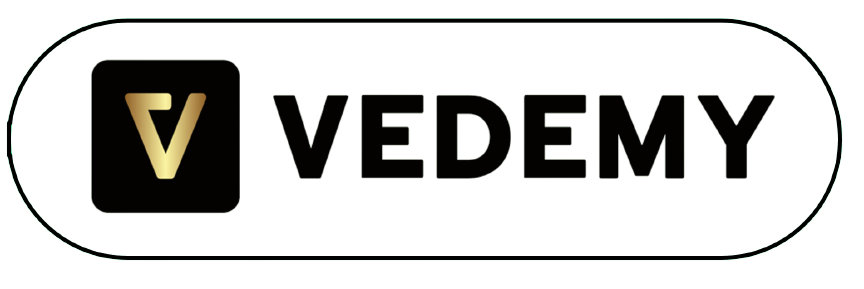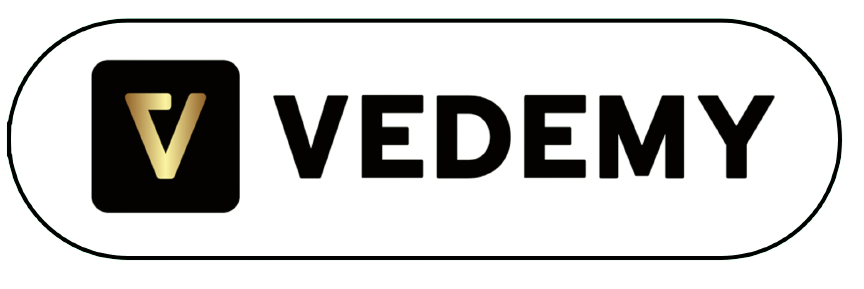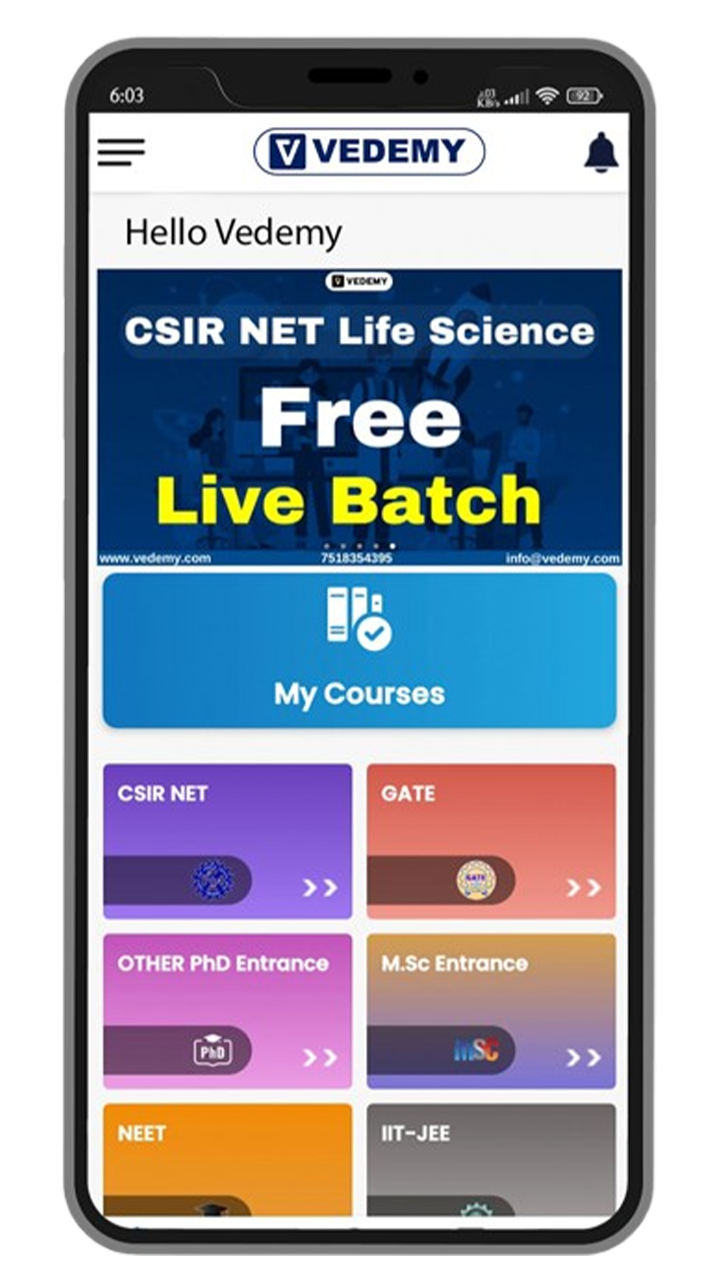Vedemy
229 days agoOpportunities for GATE BT/XL Qualified Students: A Comprehensive Guide
1. Higher Education Opportunities
1.1 M.Tech Programs at IITs, NITs, IISc, and Other Institutes
- IITs: GATE BT/XL scores are accepted for M.Tech in Biotechnology, Biochemical Engineering, Biomedical Engineering, and allied disciplines. Top departments may have GATE score cutoffs typically above 600–650 (depending on the year and the institute).
o For example, IIT Bombay (Bioengineering) often has cutoffs in the 650+ range, IIT Delhi (Biochemical Engineering & Biotechnology) might vary around 600–650, and IIT Kharagpur (Biotechnology & Biochemical Engg.) can be in a similar range.
o For mid-range scores (450–600), you may still get calls from IIT Guwahati, IIT Roorkee, and newer IITs for related departments.
- IISc Bangalore: Known for its Master of Science (Research) programs and M.Tech in areas like Biological Sciences and Bioengineering. It usually has a very high GATE cutoff (650+), but exact numbers vary each year.
- NITs: If your rank/score is slightly lower (e.g., GATE score in the 350–500 range), you can aim for top NITs such as NIT Warangal, NIT Trichy, and NIT Surathkal in Biotechnology, Chemical Engineering (with a biotech specialization), or allied fields.
- Other Institutes/Universities: Many Central Universities and State Universities offer M.Tech in Biotechnology or allied areas. For example, JNU (Jawaharlal Nehru University), University of Hyderabad, and Anna University also accept GATE BT/XL for admission (or sometimes have their own entrance exams but consider GATE for scholarships).
- Interdisciplinary Programs: Fields like Bioinformatics, Biomedical Engineering, Computational Biology, and Food Technology may also accept GATE BT/XL. It is worth checking each institute’s admissions brochure because sometimes they allow GATE in XL for certain seats, or they have a combined cutoff if you have the relevant background.
1.2 Ph.D. Programs
· Direct Ph.D. at IITs, IISc: Many IITs allow direct Ph.D. admissions for GATE-qualified students. If your GATE rank is within top 200–300, you’ll have a good chance of securing a Ph.D. seat with a stipend (~₹31,000/month for the first two years, then ₹35,000/month).
· Interdisciplinary Ph.D.: You can also join interdisciplinary research areas like Nanobiotechnology, Systems Biology, Genetic Engineering, etc.
· Cutoffs & Interviews: Even if you have a moderate GATE score, impressing the interview panel with strong fundamentals and research proposals can help secure a Ph.D. offer.
2. Public Sector Undertakings (PSUs)
- PSUs recruiting through GATE in Biotechnology:
o DRDO: May recruit M.Tech (Biotechnology) graduates via GATE. Often, DRDO has openings under its Scientist ‘B’ category.
o ONGC: Occasionally recruits Biotech/Life Science graduates through GATE for R&D or reservoir analysis roles, but this is not as frequent as core engineering branches.
o NTPC, IOCL, BARC: Historically, some have had notifications for Biotech or Life Science graduates, but the number of seats is usually small or sporadic.
- Expected cutoffs: Since fewer seats are available, the rank/score requirement might be very high (often top 100–200 ranks in GATE BT). But these openings are not as regular as those for Mechanical, Electrical, etc.
- Roles & Salaries: Typical entry-level PSU salaries for scientists/engineers can be in the range of ₹8–12 lakhs per annum (CTC), depending on the PSU.
3. Research Fellowships
- CSIR JRF-GATE:
o CSIR has a JRF-GATE fellowship specifically for candidates who have qualified GATE. Under this scheme, you can join CSIR labs for a Ph.D. or research projects, receiving a monthly stipend of ₹31,000 + HRA for the initial two years, which can increase upon promotion to SRF.
o Eligibility usually requires a valid GATE score and a first-class degree in a related field.
- DBT/ICMR Fellowships:
o DBT Junior Research Fellowship (Biotechnology Eligibility Test – BET) is a separate exam, but if you have qualified GATE BT/XL, some DBT-supported research projects might consider your GATE score in the selection process.
o ICMR JRF: Primarily uses its own exam, but some labs prefer GATE-qualified candidates for project positions.
- DST (Department of Science & Technology):
o Similar project fellowships under DST can require a GATE qualification. Check the DST website or the project’s advertisement for details.
- Prime Minister’s Research Fellowship (PMRF):
o For direct Ph.D. admissions in IISc/IITs, a strong GATE score (650+) can make you eligible for PMRF if you meet other criteria (like a high CGPA from your B.Tech/B.Sc.).
o Fellowship amounts are quite high (up to ₹70,000/month plus a research grant).
4. Other Relevant Opportunities
4.1 Scholarships and Funding
· M.Tech Stipend: If you join an M.Tech at an institute recognized by AICTE/UGC, a GATE-qualified candidate typically gets a stipend of ₹12,400/month for up to 24 months.
· Various State/Institute-Level Scholarships: Some states or institutes offer top-up scholarships for high GATE scores.
4.2 International Opportunities
· A few foreign universities (e.g., in Singapore – NUS, NTU; some German universities) sometimes consider GATE scores for MS/Ph.D. admissions or for shortlisting.
· Requirements vary; typically, a GATE score in the top 10% can strengthen your application abroad, although you usually also need GRE/TOEFL/IELTS depending on the country.
4.3 Alternative Career Paths
· Lectureship/Assistant Professor: After completing M.Tech or Ph.D. (entered via GATE), you can apply for faculty positions in engineering colleges. Many top institutes (IITs, NITs) require both a Ph.D. and a valid GATE background as part of their eligibility criteria.
· Industry & R&D: Biotech/pharmaceutical firms (e.g., Biocon, Dr. Reddy’s, Bharat Biotech) look for M.Tech/Ph.D. graduates with strong fundamentals. Having cracked GATE and done a specialized PG enhances your profile.
· Entrepreneurship: With a biotech background, you can explore BIRAC’s Biotechnology Ignition Grant and other startup funding.
· Allied Roles: Patent officers, scientific consultants, bioinformatics analysts — these roles can also give preference to those with M.Tech/Ph.D. from reputed institutes (i.e., GATE qualifiers).
5. Score/Rank Range Overview
Note: Exact cutoffs vary yearly based on number of applicants, difficulty level, and seat availability. The ranges below are approximate.
· Top 100–300 Ranks / 650+ Score:
o IISc Bangalore, top IITs (Bombay, Delhi, Kharagpur, Kanpur, Madras) for M.Tech/Ph.D.
o Highest chance for PSU recruitment (although limited seats in Biotech).
o Eligible for premier fellowships like PMRF if other criteria are met.
· Mid Ranks / Score 450–650:
o Newer IITs (e.g., IIT Indore, IIT Ropar, IIT Mandi) or mid-tier older IIT departments.
o Strong chance at top NITs (Warangal, Trichy, Surathkal), good Central Universities.
o Research fellowships in CSIR labs, DST projects, etc.
· Lower Ranks / Score 300–450:
o NITs, IIITs, and Central/State Universities.
o Might get project positions in labs/institutes that require a GATE qualification for the stipend.
· Qualified but Low Score (<300):
o May still get M.Tech in less in-demand institutes or in interdisciplinary branches.
o Eligible for M.Tech stipend if admitted to AICTE-recognized programs.
o Opportunities for project fellowships, smaller private universities, or alternative research organizations.
6. Key Takeaways and Application Process
1. Stay Updated on Cutoffs: Check individual institute websites for updated cutoffs (they change every year). COAP (for IITs) and CCMT (for NITs) are centralized portals for M.Tech admissions.
2. PSU Notifications: Visit PSU career pages regularly (e.g., ONGC, DRDO, BARC, etc.). Their biotech/life-science vacancies can be infrequent but valuable.
3. Fellowship Calls: CSIR, DBT, DST, and ICMR release calls for fellowships. Keep an eye on those official websites.
4. Interviews: For Ph.D. and some M.Tech programs, clearing GATE is just the first step; you’ll likely face an interview/group discussion. Preparation and clarity about your research interests are crucial.
5. Alternate Exams: Besides GATE, you can attempt the GAT-B (DBT’s Graduate Aptitude Test for Biotechnology) for certain postgraduate programs with DBT scholarships.
6. Long-Term Outlook: Even if the GATE rank is not high, having a qualified GATE score plus further achievements (like research projects, internships) can boost your profile for future endeavors.
Final Words
GATE BT/XL can open doors to M.Tech, Ph.D., PSU jobs, research fellowships, and broader R&D roles. Top ranks secure spots in premier institutes (IISc/IITs) and have a shot at PSUs or prestigious fellowships (PMRF, CSIR JRF-GATE). Mid-range scores can still lead to good NITs, Central Universities, or project fellowships with stipends. Even if the score is on the lower side, qualifying GATE itself helps you get a stipend during postgraduation and can strengthen your CV. Always refer to official institute websites and PSU notifications for the most accurate, up-to-date cutoffs and application processes.








